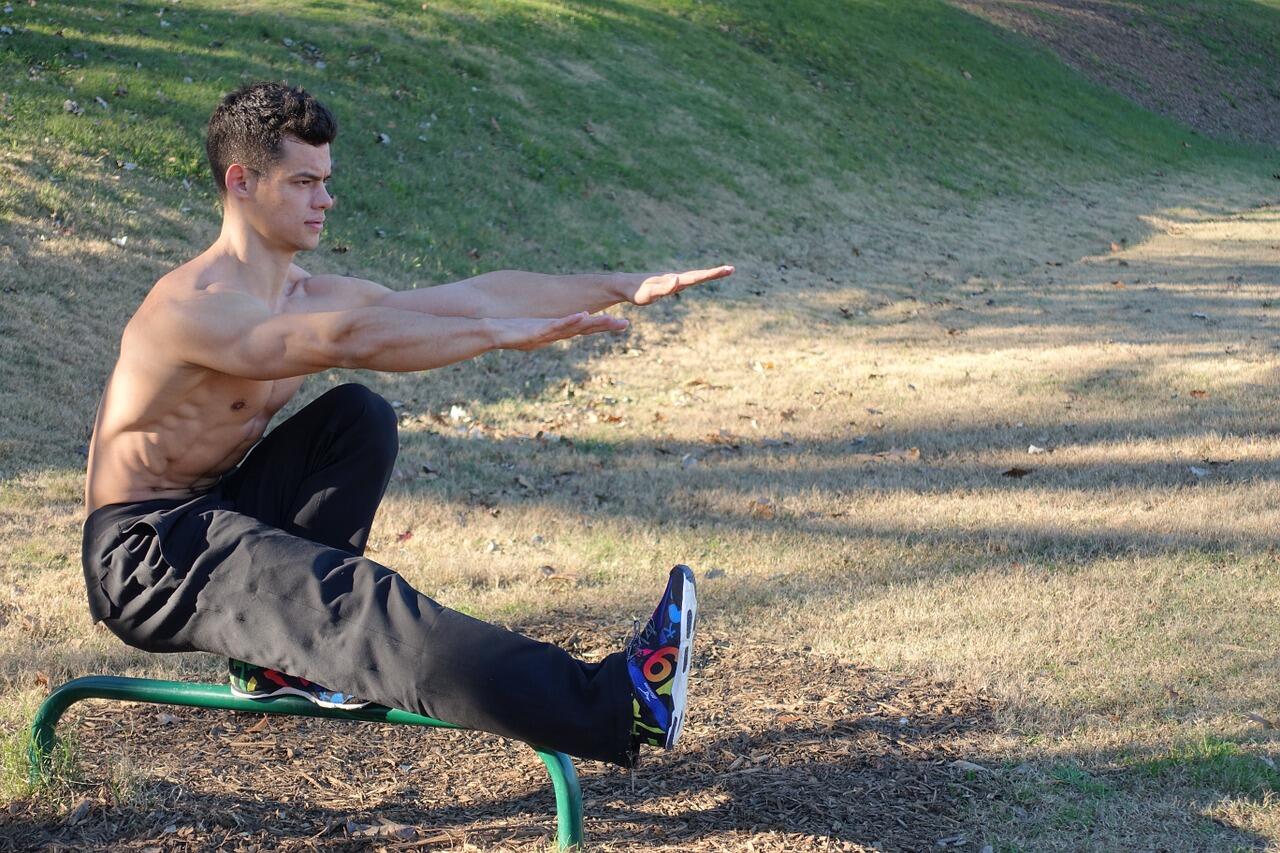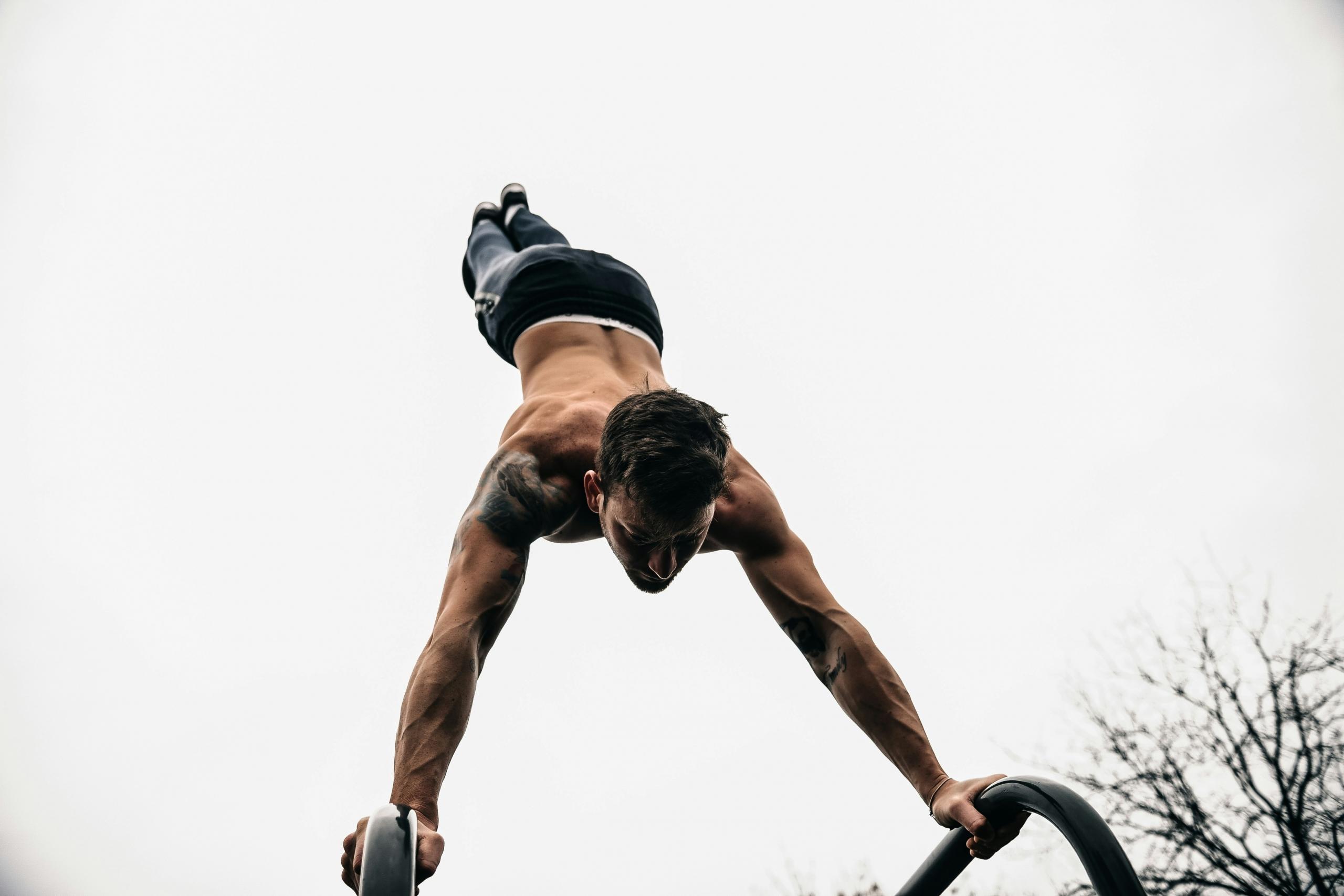The main types of calisthenics workouts based on target muscle groups:
- Upper Body: Chest, back, shoulders, biceps, and triceps
- Core: Abs, obliques, and lower back
- Lower Body: Glutes, hamstrings, quads, and calves
- Full Body: Compound movements that work multiple areas at once
Calisthenics is one of the most effective and accessible ways to build strength, endurance, and mobility using your own body weight. Whether you’re a beginner or ready to advance to more complex movements, a well-rounded calisthenic workout plan should train your entire body.

Best Calisthenics Exercises for Beginners
Before diving into advanced movements, it’s important to understand what calisthenics is. It's a form of strength training that uses your own body weight for resistance. The following beginner exercises form the foundation of most calisthenics workouts and will help you build strength, improve balance, and develop proper technique.
These are some of the best calisthenics exercises to start with to ensure a full body workout:
They’re often one of the first movements introduced in calisthenics training, and for good reason. This single movement works multiple muscle groups, requires no equipment, and can be done virtually anywhere.
How to do it:
- Get onto your knees and place your hands on the floor slightly wider than shoulder width apart on either side.
- Extend your legs backwards and hold your body up with your arms, entering a plank position.
- Ensure you keep your body in a straight line, as though there is a single straight bar running from your heel all the way up your legs and spine to your neck.
- Keeping your elbows close to your side, lower your body to the floor, so your chest is as close as possible to the floor without touching the floor
- Extend your arms again, returning them to a fully extended position.
- Ensure you pause at both the top and bottom of the movements, holding yourself there for at least a second.
When doing the exercises correctly, you are improving your calisthenics skills.
Squats are one of the best calisthenics exercises for beginners because they teach you how to move through your hips and knees with control. They’re essential for building lower-body strength, stability, and a full range of motion.
Here's how to do it:
- Stand with your feet shoulder-width apart, toes slightly pointed outward.
- Brace your core and keep your chest lifted.
- Push your hips back and bend your knees to lower into a squat — imagine sitting into a chair.
- Keep your knees aligned with your toes and your heels flat on the ground.
- Lower until your thighs are parallel to the floor (or as low as comfortable).
- Press through your heels to return to standing, squeezing your glutes at the top.
Planks are one of the best calisthenics exercises to introduce core strength early in training. They help beginners understand how to engage their abs and maintain a neutral spine.
Here's how to do it:
- Start in a forearm plank with your elbows directly under your shoulders.
- Extend your legs straight behind you, resting on your toes.
- Keep your body in a straight line from head to heels.
- Engage your core, glutes, and quads.
- Hold the position without letting your hips sag or pike up.
Dead hangs are often underestimated, but they’re one of the best calisthenics exercises for developing foundational pulling strength. They help beginners improve their grip endurance, shoulder control, and overall upper body awareness.
How to do it:
- Grab a pull-up bar with an overhand grip (palms facing away), hands shoulder-width apart.
- Let your body hang freely with feet off the ground.
- Engage your core and slightly retract your shoulder blades.
- Keep your arms extended and avoid swinging.
- Breathe steadily and hold for as long as possible with good form.
Intermediate to Advanced Calisthenics Workouts
Once you’ve got the basics down, it’s time to progress into more challenging exercises. These moves require more control, strength, and coordination and are ideal for anybody who wants to elevate their calisthenics training.
Progressing in calisthenics means improving your form, control, and consistency as you take on more challenging movements. True progress in calisthenics comes from mastering the fundamentals and gradually building strength, control, and technique.
Mastering intermediate skills like pull-ups or jump squats builds the foundation for advanced exercises like muscle-ups or handstand push-ups. Be patient with your journey. Most people take several months (or even a year) to build the strength, control, and mobility needed for high-skill moves. Focus on quality reps, train consistently, and don’t skip core and mobility work.
| Exercise | Focus Area | Progression Tips | Difficulty |
|---|---|---|---|
| Pull-Ups | Back, biceps, shoulders | Start with dead hangs or assisted pull-ups | ★★☆☆☆ |
| Chin-Ups | Biceps, back | Build up grip strength and controlled lowering | ★★☆☆☆ |
| Jump Squats | Quads, hamstrings, glutes | Master bodyweight squats first | ★★☆☆☆ |
| Archer Push-Ups | Chest, triceps, core | Progress from standard push-ups | ★★★☆☆ |
| Pistol Squats | Quads, glutes, calves | Start with assisted or TRX-supported variations | ★★★★☆ |
| Handstand Hold | Shoulders, arms, core | Practice wall-supported holds | ★★★★☆ |
| L-Sit Hold | Core, hip flexors, shoulders | Start with tuck hold or bent-knee variation | ★★★★☆ |
| Muscle-Ups | Back, shoulders, arms, core | Combine explosive pull-up with fast transition | ★★★★★ |
| Dragon Flag | Core, shoulders, back | Practice slow negative movements first | ★★★★★ |
| Maltese | Chest, shoulders, core, arms | Progress from plank and wide push-up variations | ★★★★★ |
Calisthenics is a long game, and that’s part of what makes it so rewarding. As your strength and body awareness improve, you’ll find that exercises once impossible are now within reach. Whether your goal is to master the handstand push-up, hold a Maltese, or simply improve your functional fitness, consistency and control are the keys.
Not sure whether to stick with bodyweight training or add weights to your routine? Check out this article on Calisthenics vs weight training for a quick comparison to see how the two approaches differ in building strength, mobility, and endurance.
How to Build Your Own Calisthenic Workout Plan
Designing your own calisthenics workout plan doesn’t have to be complicated. The key is balancing your training across major movement patterns (push, pull, core, and lower body) and including mobility work to prevent injury. Whether you’re a beginner or transitioning to intermediate calisthenics exercises, consistency and structure are essential.
A good calisthenics workout should include a clear rhythm: start with a proper warm-up, move through focused bodyweight exercises, and finish with a cool-down to aid recovery and flexibility. This framework helps reduce the risk of injury while gradually building strength and endurance over time.
Your workout routine should be based on your goals, current fitness level, and the time you have available. If you’re new to bodyweight training, it’s best to begin with fundamental movements that target large muscle groups.

These exercises require minimal equipment, yet offer excellent functional strength gains. If you are wondering what to include on your list of calisthenics exercises as a beginner, it should include push-ups, bodyweight squats, dead hangs, leg raises, and planks — all simple to learn but highly effective when done with proper form.
There are also plenty of free programs online to guide you. Gymaholic’s 21-day calisthenics plan is a great beginner-friendly resource. And if you prefer learning visually, several YouTube creators provide excellent step-by-step tutorials and workout plans. Youtubers like Kyle Boggeman, Mark Moser, Colin Murray, and Aramis Andreatas cover everything from beginner form breakdowns to advanced skill progressions, making it easier to stay consistent and inspired.
To help you get started, here’s a beginner-friendly 7-day calisthenics plan. You can adjust the number of rounds or intensity depending on your fitness level. Each day is built to train a different area while reinforcing mobility and recovery👇
| Day | Warm-Up (5–10 min) | Workout | Duration/Reps | Cool-Down (3–5 min) |
|---|---|---|---|---|
| Day 1: Push Focus | Arm circles, air squats, torso twists | Push-ups, incline push-ups, plank holds | 3 sets of 10–15 reps | Shoulder stretch, triceps stretch |
| Day 2: Pull & Core | Jumping jacks, leg swings | Dead hangs, assisted pull-ups, flutter kicks | 3 sets of 10–20 sec holds / reps | Wrist rolls, spinal twist |
| Day 3: Lower Body | Bodyweight squats, high knees | Squats, reverse lunges, glute bridges | 3 sets of 15 reps | Hamstring stretch, quad stretch |
| Day 4: Active Recovery | Light jog or walk | Mobility flow, yoga poses | 20–30 mins total | Deep breathing, full-body stretch |
| Day 5: Core & Shoulders | Arm circles, jump rope (1–2 min) | Plank shoulder taps, leg raises, side planks | 3 sets of 30 sec per move | Cat-cow, child’s pose |
| Day 6: Full Body | Jumping jacks, lunges, arm swings | Burpees, mountain climbers, push-ups, squats | 3 rounds x 30 sec each | Static stretching full-body |
| Day 7: Rest Day | Jumping jacks, lunges, arm swings | ✖️ | ✖️ | ✖️ |
A solid calisthenics plan doesn’t need to be complex just consistent and balanced. By choosing exercises from the calisthenics exercises list, focusing on form, and progressing gradually, you’ll build real strength and control. It’s all about steady improvement, one rep at a time.
Tips to Get the Most Out of Calisthenics Workouts
While calisthenics is beneficial in so many ways — improving strength, flexibility, coordination, and mobility — it only pays off if you approach it with intention. That starts with proper form. Whether you’re doing basic push-ups or more advanced moves from your calisthenics exercises list, focusing on technique ensures you’re building strength safely and effectively.

Consistency is another key factor. Progress in calisthenics doesn’t happen overnight, but regular practice makes a real difference.
Just as important is recovery: give your muscles time to repair and grow with proper rest, stretching, and sleep.
Finally, track your progress. This could mean noting how many reps you complete, how long you can hold a position, or which exercises you’ve added to your routine. It helps you stay motivated and shows just how far you’ve come.
















